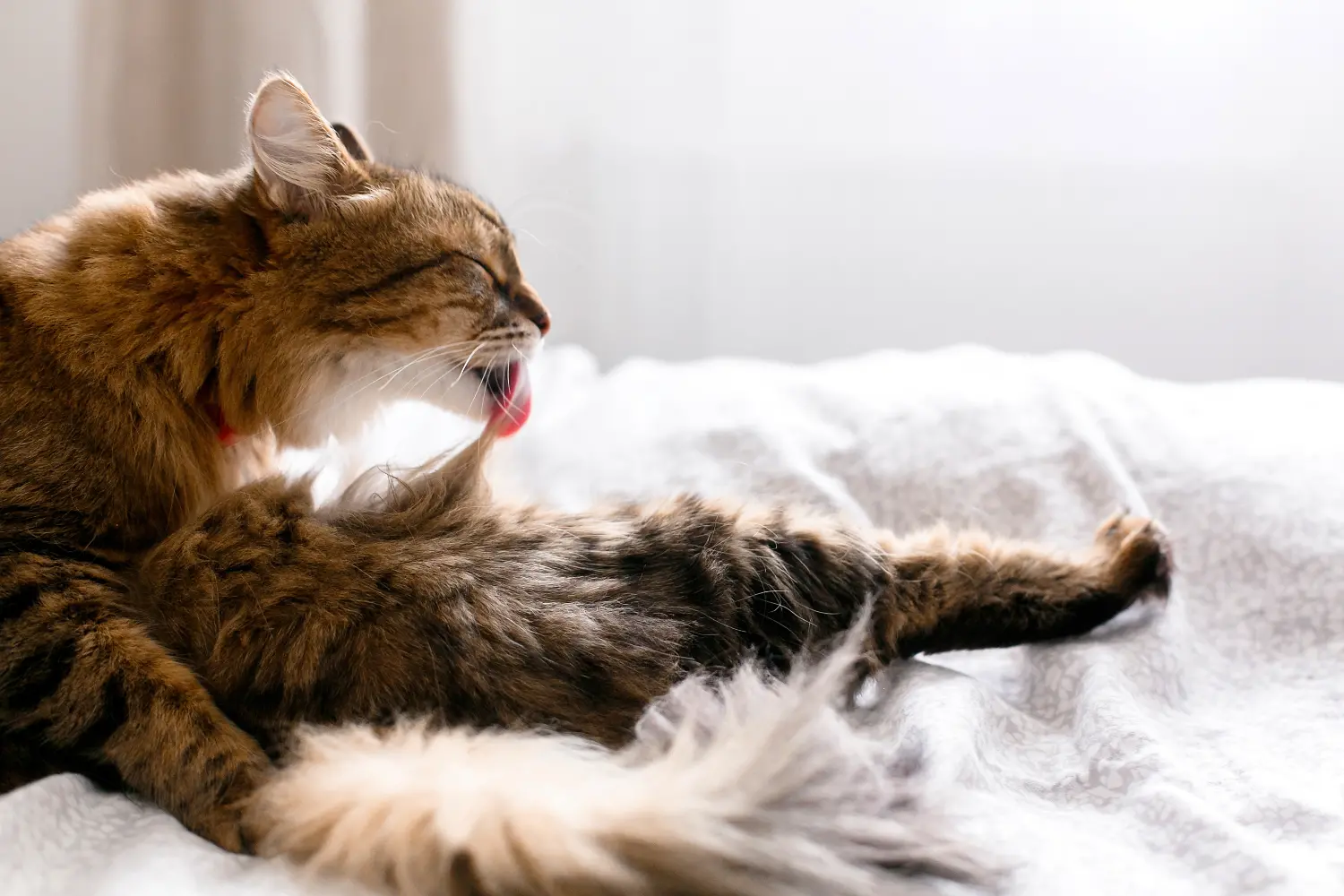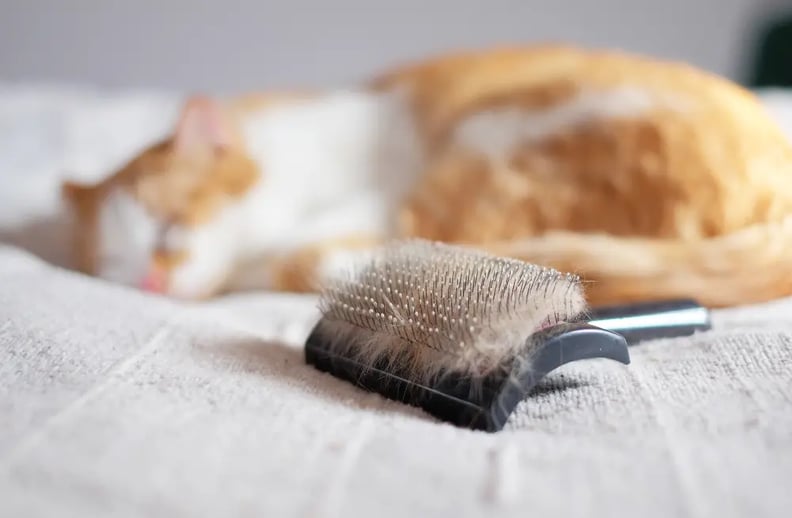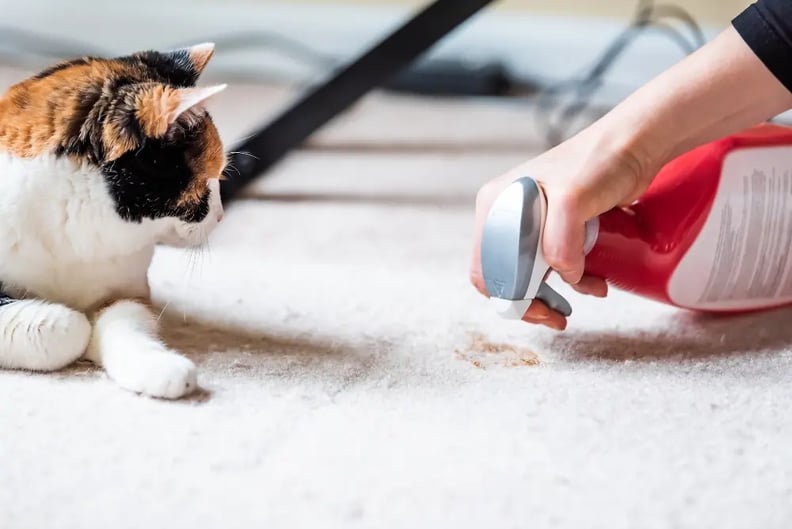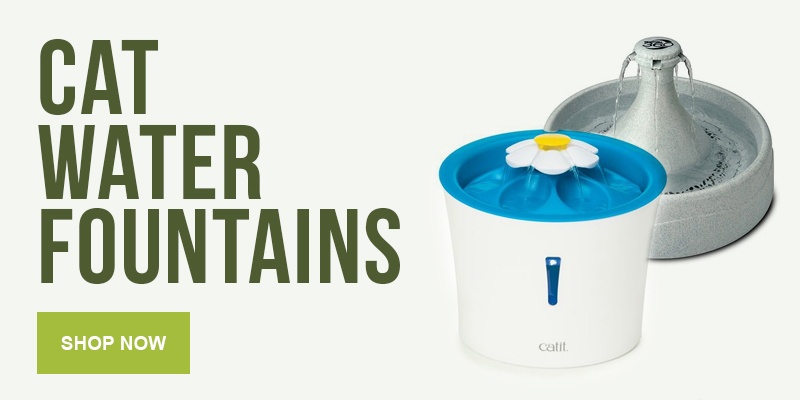
Most cats have dealt with a hairball or two, but did you know frequent hairballs aren't normal? Learn about what causes cat hairballs and how you can prevent and manage hairballs in your kitty.
Cats are fastidious groomers, but their meticulous cleaning habits can lead to the formation of hairballs, posing potential dangers. This comprehensive guide covers the prevention strategies, remedies, and dangers associated with hairballs and answers common questions to help cat owners ensure their feline companions' well-being.
If you own a cat, you are familiar with the odd noises they make when hacking up a hairball. It sounds like they are coughing, choking, and making a yakking noise that isn't pleasant and varies in decibels. Soon, the slimy bundle of cat hairball vomit is expelled like a projectile from the cat’s mouth onto your carpet, rugs, flooring furniture or bed.
The sloppy regurgitated hair is often mixed with food and other questionable substances (many owners mistakenly believe their cat has had an accident outside the litter because the cat hairball looks like poop)
Understanding Hairballs in Cats
Cat hairballs, medically known as trichobezoars, are a natural occurrence in feline companions, but did you know that hairballs should be few and far between? Yes, the occasional hairball happens, but weekly or even daily hairballs could indicate a digestive or behavioural issue.
You probably appreciate the cleanliness of your kitty. Most cats spend a good portion of the day licking and grooming themselves. But when your cat self-grooms, she will inevitably ingest some of the fur she is cleaning.
Nasty hairballs are formed when cats groom themselves, and loose fur gets accidentally ingested. The cat's rough tongue collects hair, which is then swallowed and passes through the digestive system. While most hair passes through the digestive tract and is eliminated in the feces, some hair can accumulate in the stomach and form hairballs.
Hairballs are usually cylindrical and can vary in size. Cats often vomit them up, which might be alarming to pet owners, but it's a normal way for cats to get rid of indigestible hair. Some hairballs pass through the digestive tract and end up in your cat's litter box.
Because of the shape, colour, and size, hairballs can be mistaken for cat poop. If you suspect your cat is "missing" the litter box, you might want to grab some gloves and examine the stool because it might be a hairball.
There is no need to panic at the first signs of a hairball, but if hairballs start to become a regular occurrence, then it's time to investigate why.
Hairball Symptoms in Cat
Pet owners often wonder about the difference between cat cough and hairball. Some cats will cough or regurgitate food, especially if they have eaten too fast or too much, but hairballs tend to take a little longer to work up.
Common hairball symptoms typically include your cat repeatedly coughing or gagging. This is their body's method of bringing up the cluster of fur from the stomach. It can take your cat several tries, and you might hear comical or demonic noises coming from your cat.
Leading up to expelling a hairball, your cat might also show some minor signs of discomfort, drooling, and behavioural changes. For example, they may not like to be picked up if they feel a dense hairball brewing.
If your cat cannot bring up the hairball, or if it has made it past the stomach and is either stuck or slowing down digestion, your cat might show some concerning symptoms.
Here are the more serious symptoms of hairballs:
-
- Loss of appetite
- Constipation
- Vomiting bile or recently eaten cat food
- Lethargy
- Diarrhea (potentially due to intestinal irritation)
- Changes in grooming behaviour (excessive grooming or lack of grooming)
- Abdominal discomfort or bloating
- Change in litter box habits
How to Prevent Hairballs in a Cat

Cats will get hairballs because they are fastidiously clean and will continue to lick their own fur, but even cats who groom regularly shouldn't be ingesting so much hair that they get frequent hairballs. Several factors determine how much your cat grooms and how much fur is ingested.
Some things you have no control over, like fur length and texture. Cats with very thick, fluffy fur often shed more, which means they are going to ingest more fur when grooming, but there are some things you can do to both reduce how much fur is ingested and help ingested fur pass normally and quickly through your cat's digestive tract.
Groom Your Kitty
Daily brushing can help minimize the occurrence of hairballs. Brushing your cat's fur removes loose hairs, reducing the amount your cat ingests during self-grooming. The use of deshedding tools on a weekly or biweekly basis can further reduce the amount of fur that will detach when your cat licks.
Hairball Remedies
Various hairball remedies are available, such as hairball gels, fibre supplements, and treats. These products often contain substances that help lubricate the digestive tract or improve digestion, making it easier for the cat to pass hairballs naturally.
Healthy Diet
Diet plays a big role in your cat's skin and coat health. Choosing a high-quality diet rich in healthy animal protein, moisture, and whole food ingredients can provide well-balanced nutrition that nourishes your cat from the inside out. Natural cat foods, like Primal Raw Cat Food, can drastically reduce hairballs and shedding by providing total body support.
Increase Hydration
Ensure your cat stays well-hydrated. Some cats don’t drink enough water, so feeding moisture-rich foods can help improve digestion and help ingested fur pass naturally through the digestive tract. Fresh, clean water sources like a Cat Water Fountain can also be helpful tools to keep your cat properly hydrated.
Encourage Exercise
Regular exercise can aid in digestion and overall gastrointestinal health. Engage your cat in interactive play sessions to keep them active. Wand cat and fetch toys are excellent options for encouraging movement and exercise.
Stress Reduction
Stress can contribute to excessive grooming, leading to more hair ingestion. Provide a stress-free environment and offer enriching activities to stimulate your cat mentally. Calming remedies, like Feliway, can help to naturally reduce anxious behaviours, including over-grooming.
Plant Cat Grass
Nowadays, many cats are indoor-only pets. They cannot consume natural hairball remedies, such as grass, as their ancient ancestors did. However, you can grow cat grass to help reduce the occurrence of hairballs in a cat:
Cat grass, such as oat grass, barley grass, or wheatgrass, can be a helpful solution for cat hairballs.
Here's how cat grass can aid in managing hairballs:
-
- Natural Digestive Aid: Cat grass is a natural digestive aid for cats. When cats nibble on grass, it helps induce vomiting, allowing them to expel hairballs from their stomach.
- Encourages Regurgitation: Cats often eat grass to make themselves vomit intentionally. By doing so, they can bring up hairballs along with the grass, preventing blockages in their digestive tract.
- Promotes Gastrointestinal Health: Cat grass can also help promote overall gastrointestinal health in cats. It aids digestion by providing additional rough to help drag slow-moving matter through the digestive tract.
- Provides Enrichment: Having access to cat grass provides enrichment for indoor cats. It gives them a natural and safe outlet for their chewing instincts, preventing them from nibbling on potentially harmful houseplants.
- Reduces Hairball Formation: Regular consumption of cat grass can reduce the formation of hairballs by promoting healthy digestion and preventing excessive accumulation of hair in the cat's stomach.
To introduce cat grass to your cat, you can buy ready-to-grow kits, like Catit Cat grass. Place the grass in an accessible area for your cat, and monitor their interaction with the grass. If your cat shows a lot of interest, it can become a regular part of their environment, naturally aiding hairball prevention.
Dangers of Hairballs

As with all digestive problems, their hairballs can turn dangerous. Normally, cats either pass ingested hair in their stool or regurgitate clumps of hair, but if the clump gets too large or gets stuck, your cat could be at risk of serious hairball-related health issues.
Digestive Obstruction
One of the primary dangers of hairballs is their potential to cause digestive obstructions. When cats groom themselves, they ingest loose fur. Then, your furry friend will form cat hairball blockage symptoms as the hair accumulates in their stomach and forms a clump.
Suppose the hairball is not passed through vomiting or stool. In that case, it can obstruct the digestive tract, leading to severe discomfort, vomiting, loss of appetite, and even life-threatening conditions requiring immediate emergency surgery.
Choking Hazard
Hairballs that are not vomited up can sometimes get stuck in a cat's throat, causing choking. This can be a frightening experience for both the cat and its owner, potentially leading to distress and, in extreme cases, suffocation. If your cat is coughing, but no hairball is ejected, then the cat could be choking.
Irritation and Inflammation
Hairballs passing through the digestive system can cause irritation and inflammation in the esophagus, stomach, and intestines. This irritation might lead to chronic vomiting, diarrhea, or constipation, affecting the cat’s overall well-being.
Nutritional Deficiencies
Cats might lose their appetite due to the discomfort caused by hairballs, leading to reduced food intake. Prolonged loss of appetite can result in nutritional deficiencies and weight loss, impacting the cat’s health in the long run.
Underlying Health Issues
Frequent hairball occurrences might indicate underlying cat health problems, such as gastrointestinal diseases or dietary issues. It’s crucial to address these issues to prevent the recurrence of hairballs and maintain the cat's overall health.
Cat Hairball Takeaways
Preventing hairballs involves regular grooming to remove loose fur, providing a balanced diet, and using specialized cat foods or supplements designed to control hairball formation.
If a cat experiences persistent hairball issues or shows signs of discomfort, it is essential to consult a veterinarian for proper diagnosis and treatment. By understanding the dangers associated with hairballs and taking preventive measures, cat owners can ensure the well-being and comfort of their feline companions.
If your cat frequently struggles with hairballs, consult a veterinarian. Chronic hairball issues could indicate an underlying problem, such as gastrointestinal disorders or excessive shedding due to allergies.
A vet can provide guidance on proper grooming techniques, dietary changes, or recommend specific hairball remedies to ensure your feline friend stays healthy and comfortable.
Cat Hairball Frequently Asked Questions

How to water cat grass?
Water cat grass by thoroughly moistening the soil, allowing it to drain properly. Keep the soil consistently moist but not waterlogged to promote healthy growth.
How do I clean up hairball stains?
If your cat horks up a hairball, you might find the stain it leaves behind difficult to clean. Nature's Miracle Oxy Stain & Odor Remover for Cats can help to break down these greasy stains and eliminate odours safely.
How to grow Catit cat grass?
To grow Catit cat grass, follow the provided instructions on the packaging. It involves planting the seeds in a container with soil, placing them in a well-lit area, and keeping the soil consistently moist until the grass grows to the desired height.
Can a cat choke on a hairball?
Yes, a cat can potentially choke on a hairball if it becomes lodged in their throat.
How can I help my cat pass a hairball?
Wondering how to help a cat get a hairball out? Consider providing your furry friend with cat-friendly hairball remedies, encouraging regular grooming to reduce loose fur ingestion, and offering specialized cat food designed to minimize hairball formation.
How long does it take for a cat to pass a hairball?
The time it takes for a cat to pass a hairball varies, but it typically ranges from a few days to a week, depending on the cat's size, health, and the measures taken to assist in the process. If you're concerned about your cat's health or if the symptoms persist, it's best to consult a veterinarian.
.png?width=200&height=66&name=logo%20(1).png)





